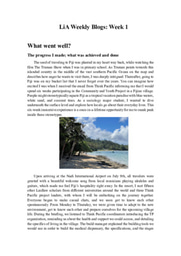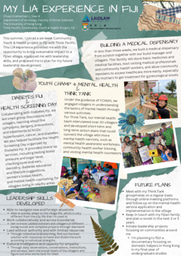Laidlaw Research Paper
In the summer of 2023, I participated in the Ararat Plain Southeast Archeological Project (APSAP), which concentrates on understanding human life and mobility in the Vedi River valley, a tributary valley to the Ararat Plain south of Armenia’s capital, Yerevan. The project focuses on the Late Bronze and Iron Ages (ca 1550 BCE – 300 CE) and the Medieval period (ca 1100 – 1400 CE). Our team excavated at the Vedi Fortress, the main site in the center of the Vedi River valley, with fortification walls that currently stand up to five meters tall, along with central defensive towers. These walls are likely dated to the Late Bronze and Iron Ages, but were reused in the Hellenistic and Medieval periods. The excavation at the site has uncovered 7000 fragments of pottery vessels made during these time periods.
During my time on the project, I gained hands-on archaeological knowledge and skills in excavation, documentation, and conservation. Rotated in three different trenches, I unearthed pottery shreds, bones, and obsidian stones with trowels and brushes, sieved each bucket of spoil to retrieve missed-out findings, recorded the GPS coordinates of each context, helped with photographing the context for future Agisoft model building, and maintained the excavation journal. After heading back to the lab, I participated in washing, photographing, and scanning the findings, which lays the foundation for building an open online database in the future that fosters data analysis and research. Also, I contributed to recovering two sizable pottery jars with excavated pottery shreds from the main trench, engaging in numbering the pottery shreds, cleaning the edges with chemical solvents, determining their original positions on the vessel, and reassembling them together by applying adhesives.
This research paper examines the dedicatory statues from Tell Asmar and Khafajah of the Early Dynastic period (c. 2900-2350 BCE) within the Neolithic Age (c. 7000-1700 BCE). Serving as background research for the APSAP project, this paper aims to further the understanding of previous archaeological excavation and findings in the Mesopotamia region of a time period earlier than our current project and, in turn, provide insight into the project’s research and analysis with excavated pottery shreds.



Please sign in
If you are a registered user on Laidlaw Scholars Network, please sign in